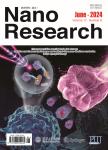How to build good inverters from nanomaterial-based transistors
作者机构:Key Laboratory for the Physics and Chemistry of Nanodevices and Center for Carbon-based ElectronicsSchool of ElectronicsPeking UniversityBeijing 100871China
出 版 物:《Nano Research》 (纳米研究(英文版))
年 卷 期:2023年第16卷第11期
页 面:12594-12600页
核心收录:
学科分类:0808[工学-电气工程] 0809[工学-电子科学与技术(可授工学、理学学位)] 07[理学] 070205[理学-凝聚态物理] 08[工学] 080501[工学-材料物理与化学] 0805[工学-材料科学与工程(可授工学、理学学位)] 0702[理学-物理学]
基 金:supported by the National Key Research and Development Program(No.2022YFB4401601) the National Science Foundation of China(Nos.62225101,62101008 and U21A6004)
主 题:field-effect transistors inverter voltage transfer characteristics noise margin nanomaterial
摘 要:As promising components of future integrated circuits(ICs),field-effect transistors(FETs)based on semiconducting nanomaterials are being extensively *** the most essential component of ICs,inverters are favored to be demonstrated at the infant stage of emerging ***,systematic research is absent to reveal how the parameters of transistors affect the performance of inverters,*** voltage transfer characteristics(VTCs).In this work,systematic analysis about the dependency between transistor-and inverter-level metrics have been carried out for both complementary metal-oxide-semiconductor(CMOS)and monotype(p-type-only and n-type-only)technologies,which is further experimentally demonstrated by carbon nanotube FETs and *** also propose guidelines towards the high noise margin and rail-to-rail inverter design based on nanomaterials.



